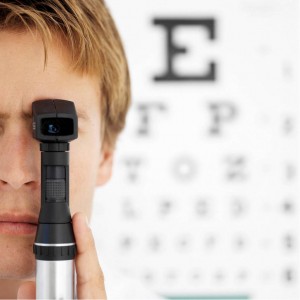By: Alina Stanciu, MD, FAAO –


VISION CHANGES WITH AGE – Presbyopia
The aging process affects the clarity and quality of vision, which may impact your ability to read or drive at night. Two primary causes of vision loss with age are cataracts and presbyopia.
WHAT IS A CATARACT?
The natural crystalline lens of the eye is made mostly of water and protein. As a person ages some of the protein will clump together, causing the eye’s natural lens to become discolored and clouded. This clouding of the natural lens is called a cataract.
When this occurs, light rays passing through the eye become scattered and unfocused. The result is that all objects, whether near or far, become blurry. If left untreated, cataracts can lead to blindness, although this is very uncommon in the United States.
The only treatment for a cataract is removal of the affected natural lens of the eye and implantation of a lens implant, or intraocular lens (IOL). The procedure is safer, faster, and more comfortable than ever before and millions of people worldwide are now enjoying excellent vision as a result of their cataract procedure and new replacement lens.
WHAT IS PRESBYOPIA?
As we age, the natural crystalline lens in our eye becomes less flexible. This lack of flexibility compromises the eye’s ability to switch from one focal point (objects at a distance — driving) to another focal point (objects that are close — reading). This is called presbyopia.
The practical effect of this loss of flexibility in the natural lens of the eye is that we lose our ability to read or see close objects without reading glasses or bifocals.
Today, for people who have cataracts with or without presbyopia, there is a procedure to remove the affected natural lens of the eye and replace it with an intraocular lens (IOL). There are now two types of IOLs available, monofocal and multifocal.
WHICH INTRAOCULAR LENS IS BEST FOR ME?
A traditional monofocal IOL is designed to provide you with enhanced distance vision only. The implant can not change shape like your original lens. Thus, you have no ability to focus in or out and you will often be dependent on progressive bifocals for near vision.
Multifocal IOL’s are designed to provide someone who has a strong desire for greater independence from glasses or contacts with multifunctional vision. They work on the same principle as progressive eyeglass lenses and multifocal contact lenses- different zones in the lenses have different lens powers to improve vision at all distances.
There are many different types of IOLs that are used in cataract surgery. Some of the newest technology in multifocal IOLs include; the Tecnis Multifocal IOL, ReSTOR IOL, and crystalens.
AM I A CANIDATE?
If you are diagnosed with cataracts and are experiencing one or more of the following symptoms, you may be a candidate for a Multifocal Lens:
- Difficulty reading
- Difficulty seeing close objects
- Difficulty seeing to drive, especially at night
- Changing glasses prescriptions
- Needing bifocals
WHY ADVANCED EYE CARE & LASER CENTER?
Dr. Alina Stanciu is Board Certified by the American Academy of Ophthalmology and has been practicing in Bonita and Naples for over 15 years. She is also a member of the American Society of Cataract and Refractive Surgery and has performed thousands of Advanced Cataract surgeries with excellent results.
To enjoy better vision in 2012 and to find out if you are a candidate for this procedure and which lens option is best for you call 239.949.2020 today for a FREE Cataract Consultation.
Offices in Bonita & Naples
www.stanciueyecare.com
 Southwest Florida's Health and Wellness Magazine Health and Wellness Articles
Southwest Florida's Health and Wellness Magazine Health and Wellness Articles

